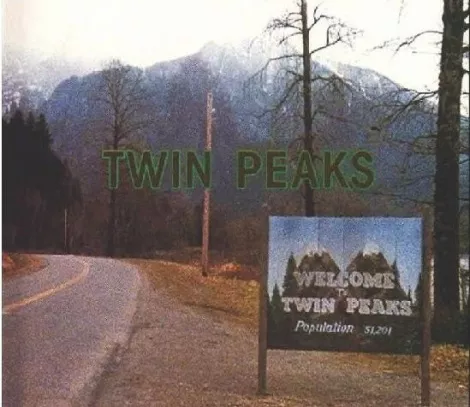
In the spring of 1990, TV drama was dead—not on life support, not comatose; dead. The only remotely successful hour-long dramatic series that year were Murder, She Wrote and Matlock. In other words, if you were under the age of 70 and wanted entertainment besides sitcoms and America’s Funniest Videos, you went out to the movies.
Then a desperate ABC, mired deep in third place in the ratings, gave director David Lynch (Blue Velvet) and Mark Frost free rein to create a drama that didn’t fit in any box that existed at the time. It would be a serialized show about a murder investigation in a small Pacific Northwest logging town, and the other strange goings-on there. On April 8, 1990, Twin Peaks premiered—and it’s not at all hyperbolic to suggest that every great television drama of the past 20 years owes its existence to that event.
That pilot episode alone, directed by Lynch, was astonishing. As it began to lay the groundwork for its central mystery—who killed popular high-school student Laura Palmer?—and the investigation by perky, coffee-loving FBI Special Agent Dale Cooper (Kyle MacLachlan), it did things that no other television show of the time even seemed to consider doing. It was unsettling. It was cinematic.
It was rich, complex and more than a bit absurdist. It demanded that you pay attention—not just from week to week, but from minute to minute, since you might miss a remarkable piece of imagery or a great deadpan gag.
Plenty of significant people clearly were paying attention. David Chase, a TV writer and director who had been struggling along in the business for nearly 20 years, saw Twin Peaks and recognized the possibility for crafting a series with scope and artistry; he subsequently called the show he created, The Sopranos, “Twin Peaks in New Jersey.” Chris Carter, who had been muddling his way through sitcom writing and a Disney development deal in the late ’80s, became a fan; he later applied the dark mood and supernatural underpinnings of Twin Peaks to The X-Files.
The creative lineage from just those two examples is easy to trace. Would there be a Mad Men without creator Matthew Weiner’s writing stint on The Sopranos? Would there be a Lost without The X-Files (credited by J.J. Abrams as one of his main creative inspirations)? And would there be any of them without Twin Peaks?
Twin Peaks lasted only 29 episodes, burning bright and flaming out fast in post-Laura Palmer plot lines that grew more convoluted and less compelling. Because it was so short-lived and never a Nielsen ratings smash, it’s easy to underestimate its influence. But you can still see Peaks’ fingerprints on TV's finest serial dramas. Check out the visual depth of any Mad Men episode, and you’ll be seeing echoes of Twin Peaks. It’s no coincidence that Mad Men has regularly featured directing by Lesli Linka Glatter and Tim Hunter, both alums of Twin Peaks.
There’s a quote, attributed to Brian Eno, that hardly anyone bought The Velvet Underground & Nico upon its initial release, but everyone who did buy it formed a band. That was what Twin Peaks was to television drama: The burgeoning creative minds who saw it began to understand what was possible if they were allowed their unique vision. On its 20-year anniversary, let’s toast its groundbreaking impact—with a cup of joe, and a damned-fine piece of cherry pie.
|
Scott Renshaw:
|